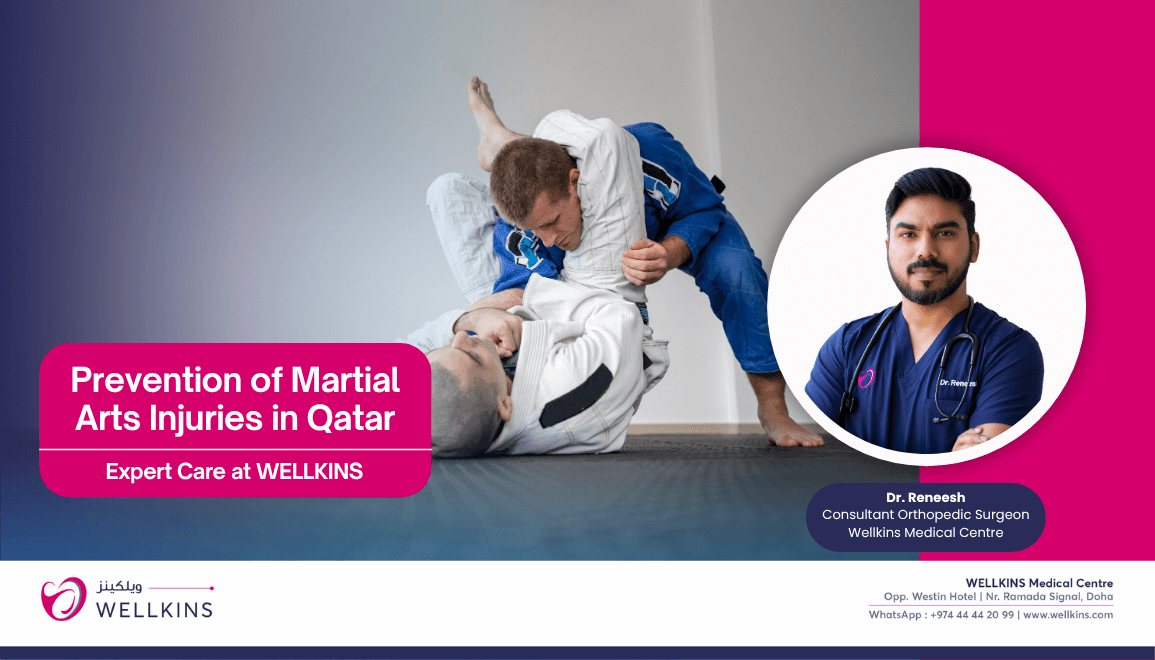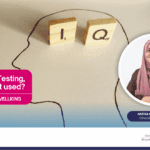Author: Dr. Reneesh (Consultant Orthopedic Surgeon – Wellkins Medical Centre)
Martial arts are a phenomenal way to build strength, flexibility, discipline, and confidence. Whether you practice Karate, Taekwondo, Judo, or Mixed Martial Arts (MMA), you’re engaging in a high-impact, demanding activity. However, with intense training comes a significant risk of injury. As Orthopedic Specialists at Wellkins Medical Centre, we frequently treat dedicated practitioners for a variety of musculoskeletal injuries, ranging from simple sprains to complex ligament tears that may require surgery. Understanding these risks and how to manage them is the key to a long, injury-free career in your chosen discipline. Our aim is to help you maintain peak physical condition so you can train consistently and safely.
“Maximizing performance and longevity in martial arts in Qatar requires proactive orthopedic health, not just reacting to injuries. It demands addressing biomechanical risks: from joint conditioning and flexibility to correcting technique flaws and fatigue management. A well-structured injury prevention plan including expert assessment, proper gear, and warm-up routines is essential for preserving joint function and a successful fighting career, not just treating the inevitable sprain.”
Common Injuries in Martial Arts
The type of injury you sustain often depends heavily on your martial art style striking arts lead to impact injuries, while grappling arts lead to joint and soft tissue issues. Regardless of the style, certain injuries are consistently seen by orthopedic surgeons:
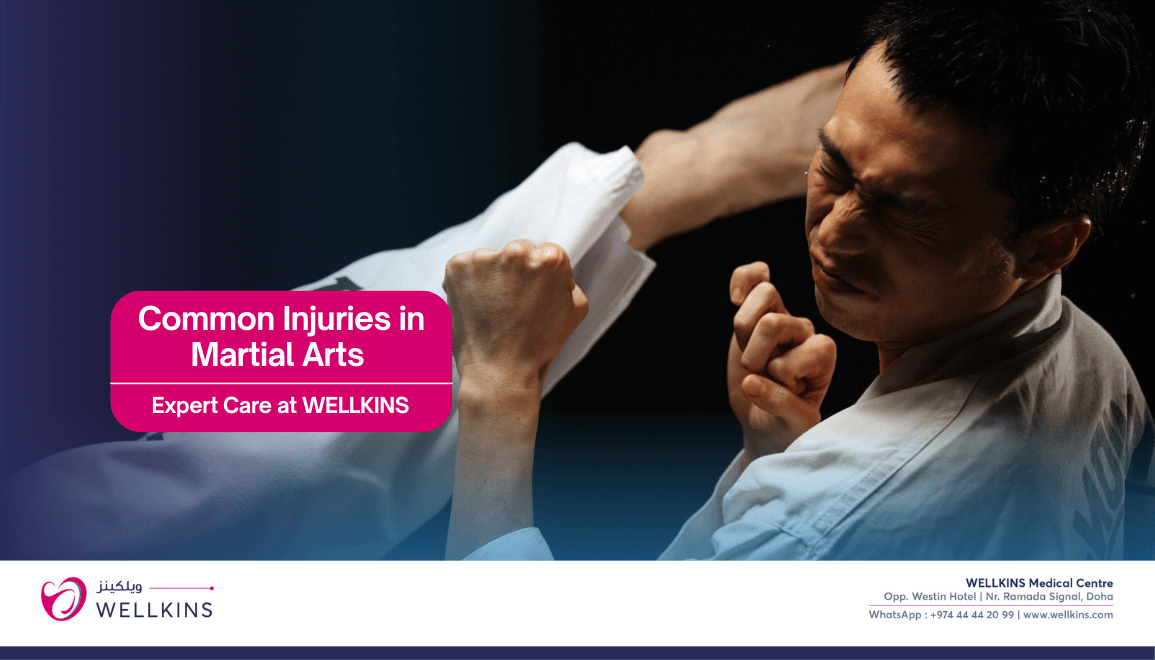
Sprains and Strains
These are the most frequent visitors to our clinic and represent damage to the soft tissues. Sprains affect ligaments (tissues connecting bones), while strains affect muscles or tendons (tissues connecting muscle to bone).
Common Sites: The ankle, wrist, knee, and shoulder are the most vulnerable joints due to their mobility and exposure during sudden movements.
Mechanism: They usually result from sudden, explosive movements improper landing after a powerful kick, sudden twisting during a throw, or hyperextension of a joint during a block or submission attempt. The ankle is particularly susceptible during pivots and rapid footwork on mats, especially if the muscles are fatigued.
Fractures and Dislocations
These acute injuries involve damage to the bones and joints and are common in contact sports where direct impact is involved.
Common Sites: Fingers, wrist, forearm, clavicle, and the nose are frequent sites of breakage. The small bones in the hands are particularly fragile when striking hard surfaces or opponents without proper gloving or technique.
Mechanism: Direct impact from striking, or falls onto an outstretched hand (a common reflex that transmits force up the arm). Dislocations, particularly of the shoulder, can occur during throws or takedowns when the joint is forcibly taken beyond its natural range of motion.
Contusions and Hematomas
These injuries are the result of trauma to the muscle tissue, usually considered minor but requiring attention.
Mechanism: Caused by striking or blocking hard blows during sparring or competitions. Repeated contusions to the same area can lead to a more serious condition called myositis ossificans, where bone starts to form within the muscle.
Presentation: They usually present as localized pain, swelling, and visible bruising (hematoma) at the site of impact.
Ligament Injuries
Ligament injuries often represent a more serious threat to joint stability, particularly in the lower body.
Examples: The Anterior Cruciate Ligament (ACL) or Medial Collateral Ligament (MCL) in the knee.
Mechanism: These occur during sharp pivoting movements, awkward landings from jumps, or when the knee is struck from the side. Full tears (Grade III) often result in immediate pain, swelling, and a feeling of instability, frequently necessitating surgical reconstruction to restore joint function.
Tendonitis and Overuse Injuries
These are slow-onset injuries caused by repetitive stress and insufficient rest, wearing down the tissues over time.
Mechanism: Resulting from repetitive kicking, striking a heavy bag without proper conditioning, or prolonged, intense grappling sessions without adequate recovery time. The stress exceeds the tendon’s ability to repair itself between sessions.
Common Sites: The rotator cuff in the shoulder (from punching/overhead movements), the patellar tendon in the knee (from repeated jumping/kicking), and the elbow. These injuries often start as a minor ache but can become chronic and severely limit performance if training intensity is not adjusted.
Head and Neck Injuries
These are the most critical injuries due to the risk of long-term neurological damage.
Includes: Concussions (traumatic brain injuries), cervical strains (whiplash), and, in rare instances, severe spinal injuries.
Mechanism: Resulting from improper fall technique (e.g., landing on the neck), unprotected head contact during striking, or high velocity impact. Proper break-fall training (Ukemi) is essential in disciplines like Judo and Jiu-Jitsu to distribute impact energy safely across the body.
Key Causes: Why Injuries Happen
Most martial arts injuries are preventable, often stemming from poor preparation and errors in training discipline rather than pure chance.
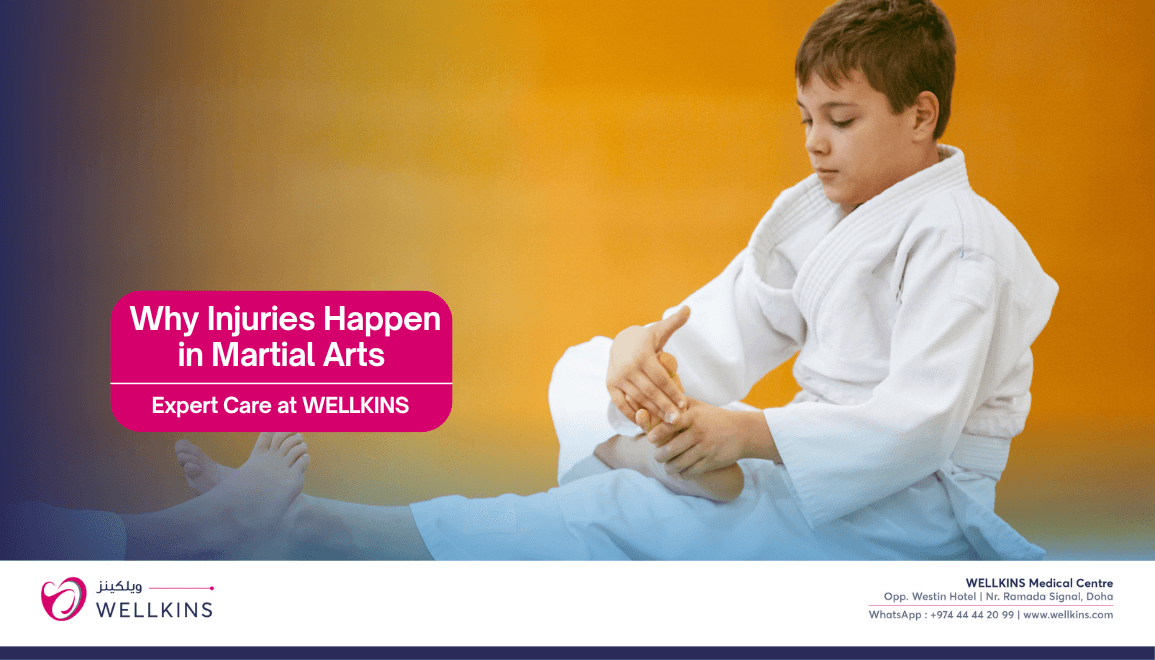
Poor Technique or Training Posture: Incorrect mechanics place undue stress on joints that are not designed to absorb those forces. This inefficiency not only reduces power but also creates weak points, such as hyperextended knees during kicks or misaligned elbows during punches, leading to acute failure.
Inadequate Warm-Up or Stretching: Cold muscles are stiff, less pliable, and far more prone to tearing and failure than warm ones. A proper 10–15-minute warm-up increases blood flow, tissue temperature, and elasticity, preparing the body for the dynamic range of motion required.
Overtraining or Fatigue: Training through pain or severe fatigue compromise’s reaction time, muscle control, and joint stability. When the core stabilizing muscles fatigue, the larger, vulnerable joints are left unprotected, significantly increasing the likelihood of ligament or tendon injury.
Improper Protective Gear: Using worn-out, ill-fitting, or insufficient protective gear is a direct risk factor. Equipment should be checked before every session for fit and wear; a compromised pad offers little to no protection.
Hard Training Surfaces or Slippery Mats: A poorly maintained training environment directly increases risk. Mats should have adequate padding for falls, and the surface must be kept clean and non slip to prevent ankle twists and accidental impact injuries.
Previous Injury Not Fully Healed: Returning to high-intensity training before an injury has achieved full stability and strength is the most common reason for reinjury. A formal clearance from an orthopedic specialist and completion of a physical therapy program are mandatory before resuming contact.
Precision Management: Diagnosis and Treatment
Accurate and swift diagnosis is the core of effective management. At Wellkins Medical Centre, we ensure every injury is properly assessed to prevent minor issues from becoming chronic problems.
Diagnostic Investigations
The process always begins with a thorough Clinical Examination where the physician assesses pain points, stability, and range of motion. Depending on those findings, we utilize advanced imaging:
X-ray: The immediate diagnostic tool for confirming or ruling out fractures and significant joint dislocations.
MRI Scan (Magnetic Resonance Imaging): The gold standard for visualizing soft tissues ligaments, cartilage (like meniscus tears), and tendons. It provides the detailed anatomical information necessary for surgical planning.
Ultrasound: Often used to assess muscle or soft tissue tears and fluid accumulation (hematomas) in real time, offering a dynamic view of the injury.
CT scan: Reserved for complex fractures, particularly involving the spine or skull, or for head injuries where a quick assessment of internal bleeding is needed.
Treatment Options
Treatment is always tailored to the severity of the injury, adhering to modern, evidence based orthopedic protocols:
Minor Injuries (Grade I–II Sprains/Bruises): The initial step is the R.I.C.E. Protocol (Rest, Ice, Compression, Elevation) to halt swelling. This is often supplemented by prescribed analgesics and anti inflammatory medication to manage discomfort, followed by physical therapy focusing on functional rehabilitation and a gradual return to activity.
Moderate to Severe Injuries (Grade III Tears, Fractures): This level requires more aggressive intervention, which may include Immobilization using splints, casts, or specialized braces. Complete Reduction is performed for dislocations to realign the joint. Surgical Repair is typically necessary for completely torn ligaments or ruptured tendons to restore joint integrity and long-term stability. Post operative rehabilitation is a mandatory and lengthy process to ensure a safe return to martial arts.
Prevention: Training for Longevity
The secret to a long, successful career in martial arts is not surviving injuries, but actively avoiding them. Incorporate these strategies into your daily regimen:
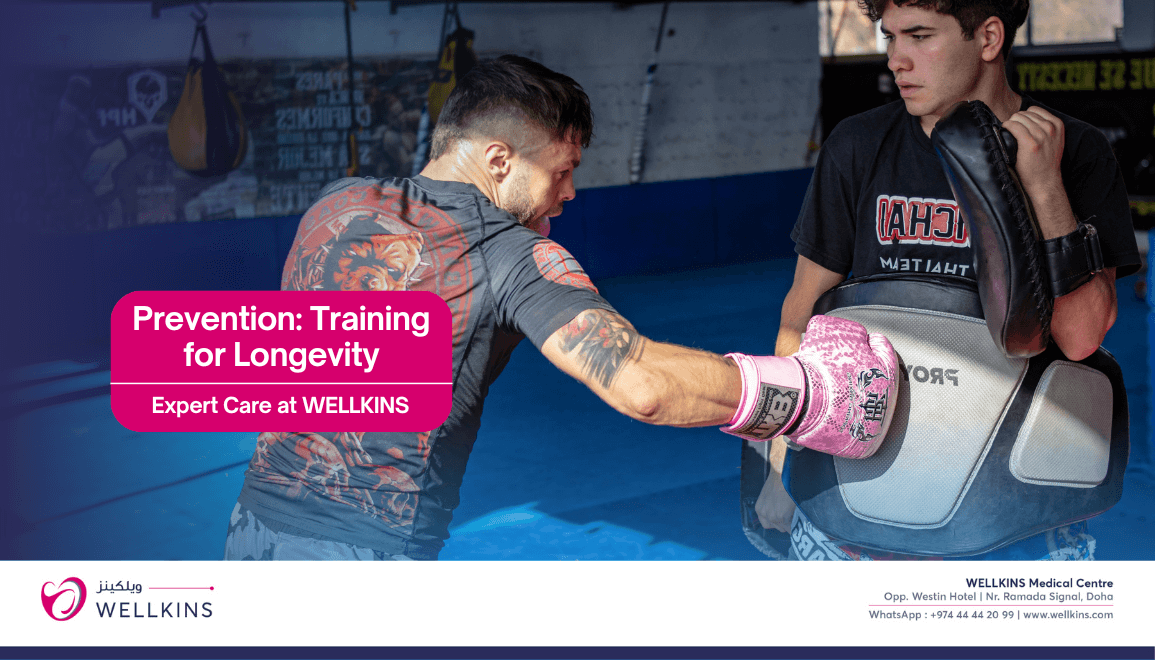
Proper Warm-Up and Stretching: Dedicate a non negotiable 10–15 minutes to dynamic stretching (movement-based) before training to improve flexibility and reduce muscle stiffness. This prepares the neuromuscular system for rapid, powerful contractions.
Correct Technique and Supervised Training: Always commit to learning under qualified and experienced instructors. Poor form is the single biggest cause of injury. Focus on mastery of fundamental movements before increasing speed or power, as muscle memory for correct technique provides the best injury protection.
Protective Equipment: Never compromise on safety gear. This includes wearing correctly sized mouthguards, headgear, shin and hand pads, and supportive joint braces if required. A well-fitting mouthguard, for instance, not only protects teeth but can also reduce the risk of concussion.
Adequate Rest and Recovery: Listen to your body and schedule regular rest days. Avoid training through persistent pain or severe fatigue. Nutrition and quality sleep are non-negotiable your muscles, tendons, and ligaments primarily build strength and heal during recovery, not during the workout itself.
Safe Training Environment: Always inspect your training space. Ensure proper, clean, shock-absorbing mats are used, and there is adequate clear space around the training area to prevent accidental collisions or falls off the edge.
Gradual Progression: Follow the principle of periodization increase the intensity, duration, and complexity of techniques slowly. Rushing training loads before your connective tissues have adapted is a direct path to overuse injuries and acute failures.
Take-Home Message
Martial arts offer tremendous physical and mental benefits, but safety must always come first. Your long-term success in the sport hinges on your ability to stay healthy. Early recognition and prompt, professional management of injuries ensure a quicker recovery and significantly reduce the risk of chronic, long-term complications, allowing you to return to peak performance faster.
If you experience persistent pain, noticeable swelling, or joint instability after training, resist the urge to “tough it out.” Ignoring minor injuries is the most common path to major, potentially career-ending problems later on. When an injury disrupts your training, seeking specialized orthopedic guidance is a crucial investment in your future. At Wellkins Medical Centre, we effectively guide you in sports injury management and provide you with an accurate diagnosis and a clear, functional recovery plan specifically tailored to the demands of your sport, ensuring you regain full strength and mobility. Protecting your body today, with the support that ensures you to continue practicing the art.
To book an appointment at Wellkins Medical Centre: https://wellkins.com/visit


